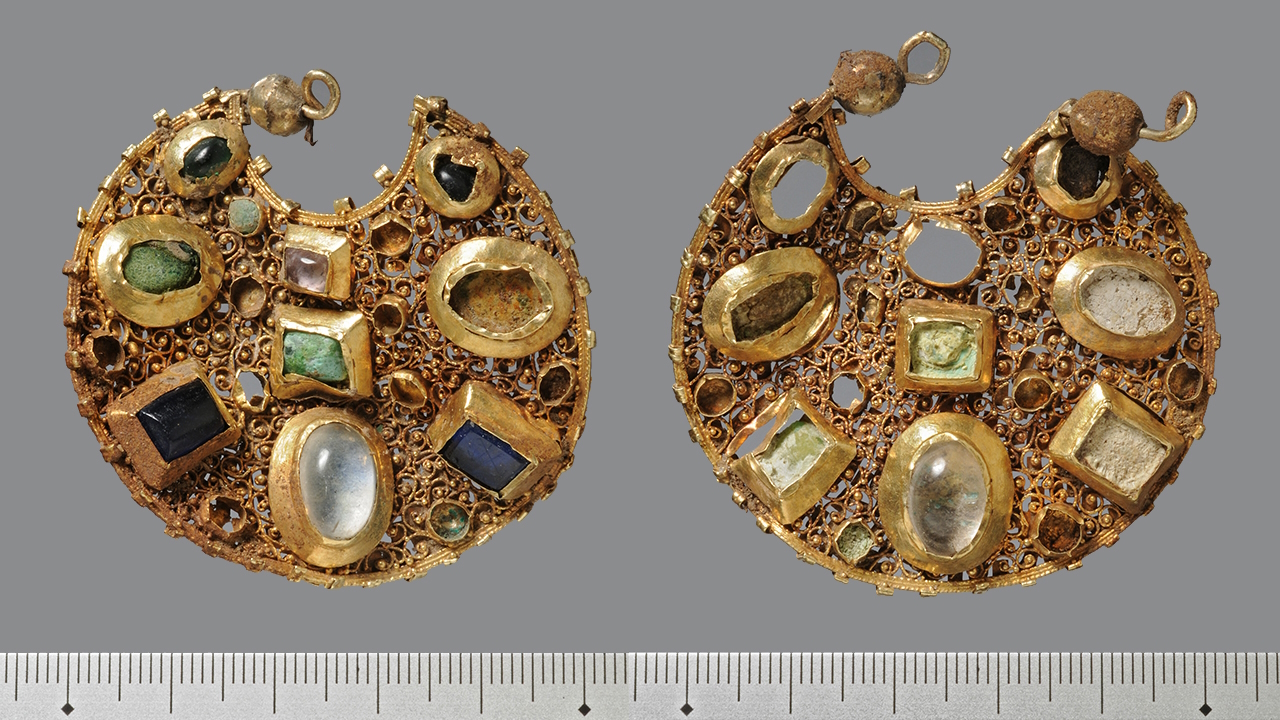
The third walk with a detector brought a novice detectorist a treasure from the 13th century
Categories: Nálezy nejenom s detektorem v západní Evropě
A treasure trove of 800-year-old coins and jewellery has been discovered near the ancient Viking city of Haithabu on the Jutland peninsula in Schleswig-Holstein in northern Germany. The assemblage was found by detectorist-in-training Nicki Andreas Steinmann on only his third detector trip with his training instructor.
Because Schleswig-Holstein only allows the independent use of a metal detector after training and mastery of archaeological field practice and passing thefinal exams, Mr. Steinmann, as a beginner, could only go into the field under the guidance of an instructor - a specially trained honorary detectorist/mentor. Only then can he obtain a permit from the State Archaeological Office for independent detector prospecting. This model has worked for many years to the satisfaction of both archaeologists and detectorists.
Nicki Andreas has therefore embarked on his third expedition with mentor Arjen Spießwinkel. They headed to a local field near the city. First they detected a strong signal, and once they had dug up some of the soil, they saw several silver coins and a glimpse of gold. They immediately finished the excavation and called in the state archaeologists, who then expertly recovered and documented the entire treasure. The excavation revealed about 30 silver coins, gold filigree earrings, two gold-plated rings, one ring fragment and two fibulae. The assemblage had been slightly disturbed by agricultural activity, yet some of the coins remained in their original context. Remnants of the textile, a cloth bag in which the treasure was originally stored, were also discovered.
The coins are minted by King Valdemar II of Denmark (1202 - 1241). The unique gold filigree pendant earrings are decorated with precious stones in a style typical of Byzantine goldsmithing from the early 12th century. Another exquisite piece is a gilded fibula - an imitation of a golden dinar from the Almohad dynasty (1147 - 1269) in Scandinavian style as a robe pin. Waldemar's coins date the treasure to the first half of the 13th century.
Hedeby was a major northern European trading hub in the Viking period between the 8th and 11th centuries and was one of the largest Viking cities ever. It produced, imported and sold goods of all kinds, and was home to craftsmen and goldsmiths who made fine jewellery, tools and many other useful items. In the middle of the 10th century, a bishop resided in the town. Hedeby was repeatedly sacked at the turn of the 10th and 11th centuries, the last time in 1066 by the Western Slavs, and was apparently never rebuilt afterwards.
Detectorists are valued by the government and are important for archaeology in Schleswig-Holstein. During their expeditions they repeatedly come across relics from the past by chance. During their training, they learn how to recognise archaeological finds and how to correctly locate the site. For 100 years, the State Archaeological Office has catalogued all reported finds and supported lay people in their scientific research. In contrast, searching with a metal detector and failing to report an archaeological find without a permit is considered a criminal offense.
Roman Nemec
Sources: schleswig-holstein.de, thehistoryblog.com

Imitation Almohad dinar converted into a fibula

Coins from the 13th century dating the deposit of the treasure

Earrings

He found the treasure on only his third outing

The other side of an imitation Almohad dinar converted into a fibula
The article is included in categories:









